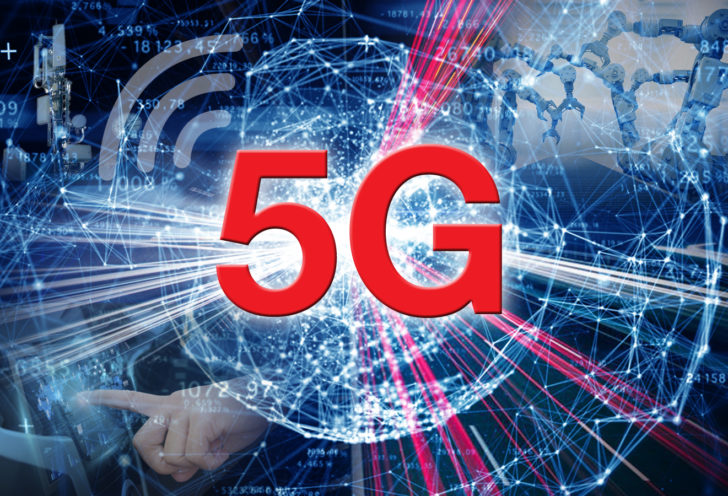| ผู้เขียน | Pairat Pongpanit |
|---|
A truth of the digital world is that people consume more and more digital data. A quantity of data and connected devices are double growth every 18 months.
For individual users, the more data they consume, the more capacity and capability needed to supporting data and connected devices. But for business, as significant internet users, wireless network becomes more important for them in creating new business models. The wireless network brings about new computer applications, new internet, new sources of revenue and uplift quality of people life.
However, it is the matter of network bottle neck incapable of supporting new things, either a consequence of physical problem (fibre optic network cannot reach to the area) or capability problem (quality of wireless network is not good in terms of speed or capacity).
That’s the important reason of wireless network development for the most coverage area, evolved from 2G to 3G and 4G, gradually broadening the road of digital data communication, with higher speed communication.
Huawei back then, a giant telecommunication network service provider working on the network for over 170 countries globally is a leader of 3G and 4G technology.
As countries including Thailand back then were enjoying with 4G experience, Huawei was working on the next generation wireless network and that’s why Huawei can be step further and faster in a change of network structure and architecture that has never been before, this is the transition from 4G to 5G.
Huawei started doing research and development the 5G network a decade ago, successfully using Polar Code, an efficient channel coding technology for 5G and be the industry’s first 5G network Slicing Router. The company has been successfully testing the 5G in laboratory for proof of concept and many 5G pilot projects.
Yang Chaobin, Huawei’s President of 5G Product Line said Huawei has fully experienced and knowledge to get ready for 5G implementation in the big cities in China by 2019.
Ryan Ding, Executive Director and President of Huawei Carrier Business Group stated that the main goal of products and services development served for the needs of many vertical industries and expands more industries and eventually it will serve for individual users.
To be able to support various vertical industries, there are more variety of specifications and broadening the digital ecosystem is needed.
“Huawei’s goal is to create multi-layer ecosystem which integrated business solutions and infrastructure seamlessly. This will lead the telecom industry to move forward and successfully expand in the future.”
Ryan Ding pointed out that 5G infrastructure network and smart devices are comparable with an abundant land where information, automation system and intelligent technologies have been developed endlessly.
In this abundant land, stake holders can grow their content, applications and cloud. To be a truly abundant land, Huawei believes that it needs to have artificial intelligence (AI) in its network so that it can better support variety of services and also improve its operation development.
“AI” in Huawei’s perspective is a multipurpose technology converged in various products and solutions to improve the network efficiency.
For example, AI can perform important role in the network management that has never been done in 4G.
There are around 200 parameters in the 4G era which the network must define the original sources and destination, but in the forthcoming 5G, each parameter to manage at a certain time will be increased at least 50 times and it can be handled more easily and faster by AI technology only.
“That’s why we believe that we need to converge AI with our 5G network,” Ryan Ding said.
Huawei did not only believe, but it has already executed. The company’s new generation intelligent cloud platform – Atlas, that defined by Ryan Ding, is a computing multi solutions.
A precise change during the transition from 4G to 5G in early stage is through the implementation of connected devices (Internet of Things) and display and voice devices. In the 5G era, high definition video will become basic service and it’s expected to generate at least US$2.5 trillion of revenue by 2025.
Those devices such as VR headsets and Google Glasses are not successful as they cannot create a truly virtual experience because the network is not inapplicable yet.
“VR that can make truly reality experience, requires a huge data at hundreds of gigabits which cannot be supported by the existing 4G,”Qiu Heng , Chief Operating Officer for wireless marking explained, adding that the 50 millisecond of network latency for autonomous car of 4G network is also not enough for processing data.
The 5G standard defines that network latency must beless than 1 millisecond. The 5G testing network of Huawei, the network latency is at 0.3 millisecond only.
Apart from VR , AI and autonomous vehicles and IoT, Huawei also has concerned for automation system in manufacturing where remote control working on the 5G network, and also smart connected drones that applied for more variety of functions from industrial purpose to agriculture, from automation manufacturing and automation traffic management, and finally, for the “smart city” and “digital society”.
Wang Xiao Yun, General Manager of Technology of China Mobile, one of Huawei 5G partners said 4G is like a road construction, 5G is comparable with building whole new town.
Peter Zhou, Chief Marketing officer of Huawei’s Wireless product line stated that Huawei has been working for 5G over 10 years and prepared to announce new 5G innovations at Mobile World Congress (MWC) in Barcelona by the end of February. All 5G products will be launched at the event, from core network, transmission, radio equipment and terminal.
“At present, we started building 5G in 10 big cities in China, and this year we will see 5G commercial network in those cities. 5G is no longer a future but a present, we only open the door connected to fully digital society.”
Before the global launch, innovations for digital society in 5G era, such as drone, VR, and smart health system powered by AI, as well as smart manufacturing will showcase at the seminar on “5G Moving Thailand In The Changing World” that will be held by National Broadcasting and Telecommunications Commission (NBTC), in collaboration with Huawei, Ericsson and Qualcomm on February 2 , Infinite Room, Pullman King Power.
“Huawei gets ready to switch on 5G for the world and Thailand,” Peter Zhou insists.










